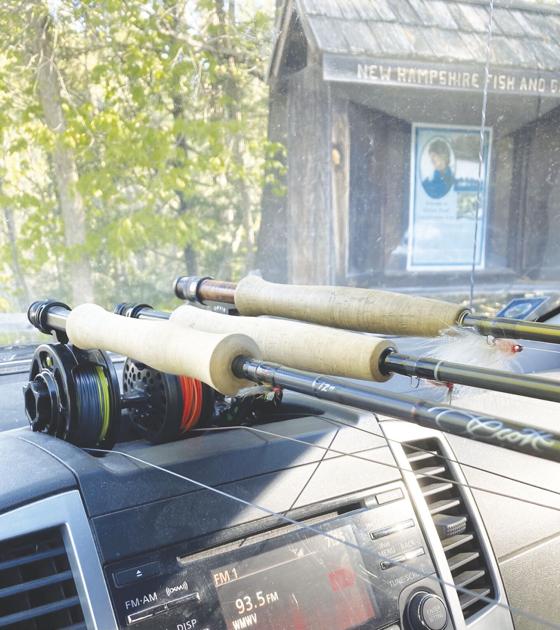New Hampshire Fish and Game publishes a list of waters that were stocked the previous week, on the Fish and Game website, every Friday.
This practice has its pluses and its minuses. On the plus side, folks learn where fish have been placed. This takes the guess work out of where an angler may find trout.
The delay in reporting the stocking allows the fish to acclimate to their new habitat and a longer chance of survival.
The downside to publishing a stocking list is that excess fishing pressure is applied to the water. The parking lot the weekend after the publishing of Hatch Pond being stocked was full.
There isn’t anything wrong with anglers taking advantage of this information. If you purchased a license, you paid for the fish that were stocked. Fish to your hearts content.
The biggest downside to publishing the stocking locations is the expectation that catching trout is automatic. There is nothing automatic about fishing. If fishing was a guarantee that you would catch a fish, it would be called catching not fishing.
Many anglers visiting the shop want to know where are the trout? As the owner of the shop, it is my job to know and to be able to guide these anglers to success. I fish the local waters almost daily. It is fun to compare notes with fellow anglers when they come into the shop.
The weather this spring has been on the colder side. This has retarded the normal progression of bug life. Under normal conditions, fly anglers would be fishing emerger patterns and some dry fly patterns.
So far this season, it has remained streamer flies and nymph patterns fished deep in the water column. Noting this, it is interesting to hear the reports from anglers visiting the shop. One would be hard pressed to believe that anglers are talking about the same body of water.
Hatch Pond has been one of our more consistent ponds this spring. I have suggested to many anglers that they should fish Hatch Pond.
One morning, I fished Hatch Pond with a Pink Wickham Fancy on a full sink line. In 40 minutes, I caught 15 trout.
On the same day, I had one angler tell me he caught four trout, two yellow perch and one pickerel.
The next angler caught a dozen trout fishing emerger patterns just under the surface. A third angler and a couple of friends caught over 40 trout in a two-hour outing.
The variation in experience on the same pond was interesting. The one constant was that the anglers catching the most fish were using full sink fly lines and getting their offerings to the bottom of Hatch Pond. Those fishing with floating lines did not have the same results.
The mantra for fishing while the waters remain cold in to “go deep or go home.” Failure to get your fly or lure near the bottom of the pond will leave the angler with less than desirable results.
This time of year, it is advisable to keep three rods set up with a sink tip line, a Type 3 full sink line, and a Type 6 full sink line. If you aren’t catching fish with the sink tip then switch lines to get deeper until you start to catch fish.
If you don’t have three rods available, get three reels and change reels on your rod. This ability to change lines will have a profound effect on your fishing success.
If you don’t plan on keeping the fish you catch, pinch down the barbs on your hooks to minimize hooking damage to the fish.
Steve Angers, a native to the Conway area, is the author of the book “Fly Fishing New Hampshire’s Secret Waters” and operates the North Country Angler.
Credit: Source link































